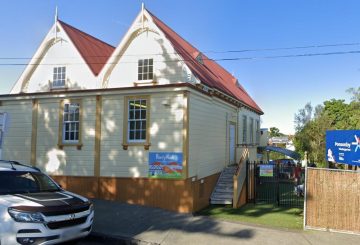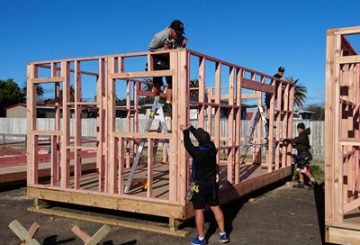10대들은 NCEA 합격점수가 작년 같은 시간보다 93,000점이나 줄어든 가운데 오늘 세 번째 학기를 마감하고 있다.
자격 기관이 RNZ에 제공한 수치를 보면, 올해 들어 지금까지 학교들이 140만 건의 성과, 성과 및 우수 성적을 당국에 보고했으며, 이는 작년보다 6%, 2019년 같은 시기보다 20% 감소한 것이다.
이 수치는 올해 가장 많은 폐쇄의 영향을 받은 지역인 오클랜드가 작년보다 NCEA의 긍정적인 결과가 4% 감소했다고 보고한 반면 기스본, 말버러, 오타고 같은 지역은 10-12% 감소했음을 보여준다.
그들은 또한 작년 같은 시간보다 7% 더 많은 미달성 결과가 나왔지만 2019년보다는 적은 것으로 나타났다.
Vaughan Couillault 중등교장협회장은 학교들이 작년보다 낮은 결과를 자격 관리 당국에 보고한 것이 놀랍지 않다고 말했다.
“작년에 우리가 겪었던 것과는 상당히 다른 이번 봉쇄는 특히 연말에 가깝다는 것이다. 우리가 봉쇄에 들어가기 전에, 그 자료는 아마도 우리가 긍정적으로 보고된 결과에서 약간 앞서고 있다는 것을 암시했을 것이지만, 몇 달 후 상황은 극적으로 느려졌다”고 그는 말했다.
Couillault는 많은 학교들이 NZQA에 보고하기 전에 재점검할 필요가 있는 내부 평가를 완료하고 표시한 것 같다고 말했다.
그는 “일부 지역이나 일부 평가 자료에서 이 같은 상황은 잠시 중단됐으며 2단계로 돌아가서 직접 대면했을 때 NZQA에 보고된 긍정적인 결과의 양이 약간 증가할 것으로 의심된다”고 전했다.
Onehunga 고등학교의 Josiah Aliimalemanu는 폐쇄로 인해 내부 평가를 완료하지 못했다고 RNZ에 말했다.
“이번 주까지 많은 평가를 받아야 하지만 음악 공연의 경우 실제로 온라인으로 할 수 없고, 신체적인 체육 평가도 실제로 할 수 없다”라고 밝혔다.
Josiah는 이것은 시험을 준비힐 때 다음 학기에 평가를 치러야 한다는 것을 의미한다고 말했다.
13학년 동급생 Faith Fineanganofo는 교실보다 집에서 내부 평가를 완료하는 것이 더 어려웠고 다음 학기에 내부 평가를 준비하는데 휴일을 써야 하는 것에 실망했다고 말했다.
학교장 Deidre Shea는 올해의 폐쇄 시점이 작년의 국가적인 폐쇄와 그에 따른 오클랜드 폐쇄보다 더 큰 파장을 일으켰다고 말했다.
“우리는 평가 측면에서 연말을 대비하여 학생들이 작년보다 더 불리한 점을 겪었다는 것을 의미한다. 어떤 경우에는 우리가 봉쇄에 들어갔을 때, 일부의 부분적인 과제를 거의 다 마쳤기 때문이다.”
그녀는 학교가 학생들에게 평소만큼 완료하지 않았더라도 여전히 따라 잡을 시간이 있다고 안심시킬 것이라고 말했다.
“학습과 성취를 계속 유지할 수있는 기회가 있을 것이며 평가를 완료하거나 처음부터 평가를 수행 할 수있는 위치에 있지 않은 경우 너무 많이 강조하지 않을 것”이라고 그녀는 말했다.
또한 올해 학생들이 이용할 수 있는 추가 학습 인정 크레딧은 학생들의 성취도 부족을 채우기에 충분해야 한다고 말했다.
Andrea Gray 자격청 부청장은 보고된 결과의 하락은 놀라운 일이 아니라고 말했다.
“3학기는 보통 학교들이 상당한 양의 평가를 할 계획이기 때문에, 봉쇄의 시기를 고려할 때, 작년과 2019년에 비해 보고된 결과의 감소는 놀라운 일이 아니다”라고 그녀는 말했다.
그녀는 올해 NCEA와 대학 입학에 대한 변화는 폐쇄의 시기와 학생들이 교실을 비운 시간을 반영하기 위해 계산되었다고 말했다.
출처: RNZ 뉴스






























































